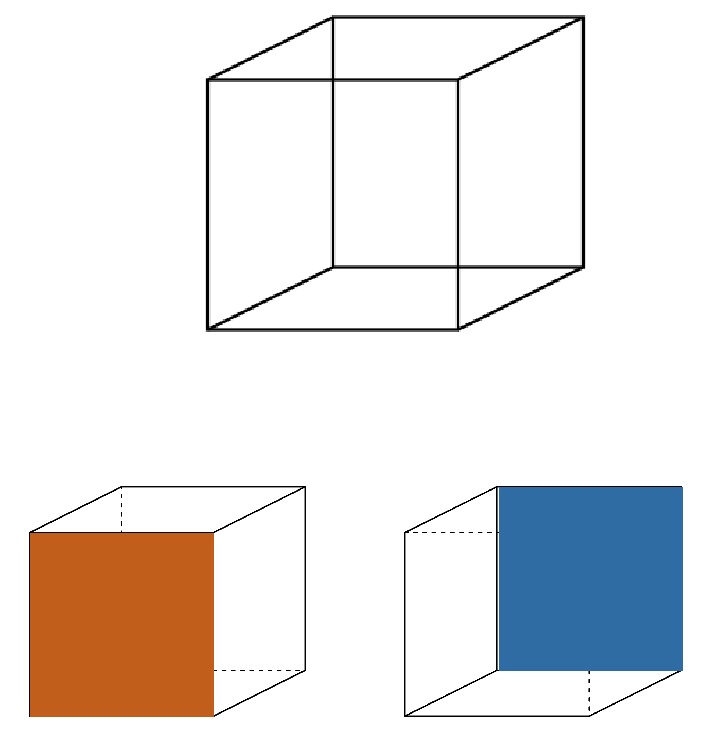The phenomenon of multistable perception
Sometimes, input signals are such that no single interpretation in terms of a particular content of the scene is credible. Safavi and Dayan note famous examples of this, including the Necker cube (a 'flat' representation of a solid cube that can be interpreted in two structurally different ways, as pointing left or right). In these cases, our brains then switch between the possible interpretations in characteristic patterns. Although we can sometimes try hard to control our perceptual switches, such conscious processes are often overwhelmed by apparently unconscious ones.
"Multistable perception is a straight-forward and non-invasive way to get a more integrative picture of the link between internal neural operations and conscious reports. We suggest that in case of perceived ambiguity, the brain treats the choice of a dominant interpretation as an internal action, which then, like all other actions, is determined by some form of value. Thus, just as when foraging for food, an animal might successively switch between patches because of the value of the victuals that are available, when processing an image with multiple possible interpretations, we might successively switch between alternative interpretations because of the value that is available from them. Thus, the brain areas, such as the anterior cingulate cortex, believed to be involved in switching between different external behaviours, might equally be involved in switching between different interpretations," says Shervin Safavi.
Value-based decisions of the brain
What then are the sources of internal value? Examples given by Safavi include aesthetic value - the subjective beauty of an interpretation; and information value - the way that we can benefit from the interpretation in terms of the external actions that we then might need to choose (as in traffic lights); along with special conditions in which particular interpretations are associated with explicit rewards determined by an experimenter.
"Perceptual multistability is a very rich test case for studying neural processing, and so it has been investigated for a very long time, and has given rise to numerous and diverse results. It also has been investigated in context of psychiatric disease, for example schizophrenia, where interpretations can be malformed, and depression and anxiety, where different aspects of value are apparently decreased and increased. We intend to test whether particular aspects of perceptual multistability could be used as a non-invasive tool for understanding psychiatric dysfunction," Peter Dayan adds.
In sum, the authors hope that their value-based view on perceptual multistability will contribute to a more cohesive understanding of the phenomenon. By involving sensory, decision-making and value-processing systems, it should help neuroscientists paint a clearer picture about what we understand as perceived consciousness, and also provide a new window onto aspects of pathology.
Original publication:
Safavi, S, Dayan, P (2022). Multistability, Perceptual Value, and Internal Foraging. Neuron. https://doi.org/10.1016/j.neuron.2022.07.024
Funding
This research was funded by the Max Planck Society, the Alexander von Humboldt Foundation, and the University of Tübingen.
Press release of the Max Planck Institute for Biological Cybernetics







